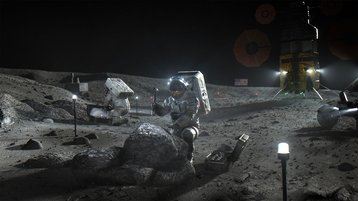NASA is one of a handful of federal agencies likely to succeed in reducing the number of data centers it uses to meet the requirements of the Data Center Optimization Initiative (DCOI), an addition to the Federal Technology Acquisition Reform Act (FITARA) set out by the Obama administration in 2014, aimed at improving efficiency, cost-effectiveness and security across federal data centers.
Consolidation for all
The legislation will force agencies to store their data in fewer facilities and, where possible, veer towards virtualization and use cloud services provided by FedRAMP (Federal Risk and Authorization Management Program) certified providers such as AWS’ US Government cloud, Microsoft Azure Government Cloud and Autonomic Resources’ ARC-P Cloud.
Both DCOI and FITARA follow on from the 2010 Federal Data Center Consolidation Initiative (FDCCI), which aimed to cut down on the number of expensive federal facilities. The DCOI hoped to save the government $2.7bn by the 2018 deadline. So far, it has saved more than $1bn in public funds, and seen 4,400 of nearly 10,000 federal data centers closed.
NASA’s program executive for computing services, Karen Petraska, thinks there is a “pretty good chance” the agency will reach its 2018 target, having closed 33 of its initial 59 data centers, she told Meritalk. The agency ultimately intends to keep 20 data centers open, which, according to Petraska, is the minimum NASA can get away with.
Introduced in August last year, the DCOI added further requirements to existing consolidation laws, such as the establishment of a power usage effectiveness (PUE) target and the compulsory installation of energy metering in federal facilities; it stated that all agencies must close a quarter of their so-called tiered (large data centers) and 60 percent of non-tiered (anything connecting to a federal network) data centers.
Alright for some
The process has been anything but plain sailing for other agencies; partially because the initial legislation massively underestimated the number of data centers they relied upon, but also because renewing IT equipment before the end of its lifecycle can cost more than it is worth.
Additionally, government bodies have redefined what constitutes a data center on multiple occasions since 2010, which increased the count for certain agencies more than others.
“Some agencies have a lot more complex data centers and politics. It could be any number of things. Older things are hard to move. Big things are hard to move. There’s some inertia there,” Petraska told Meritalk.
Although Petraska claims it is NASA’s rigorous method of elimination (which consisted of touring each of the agency’s 59 data centers over the space of a year to decide “which ones were necessary and which ones the agency could close”) its success can also be partly attributed to a much lower initial data center count. For comparison, when the OMB updated the official definition of a data center in 2013, the data center count at the Department of Defense rose from 2,500 to 3,100.
It is likely that an extension will be given to agencies that fail to meet the 2018 target, although it remains unclear what the Trump administration’s stance will be on the matter of consolidation, as IT equipment and data centers tend to take the backseat to issues laid out in last year’s election pledges. The matter has been pitched from a cybersecurity perspective by the Government Accountability Office (GAO) in the hope of capturing more of the administration’s attention.

